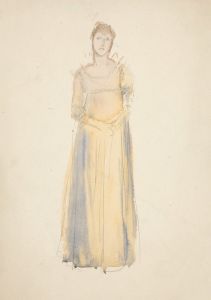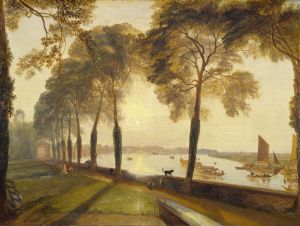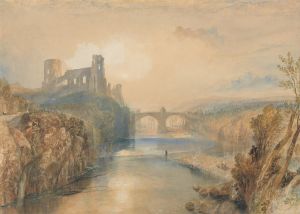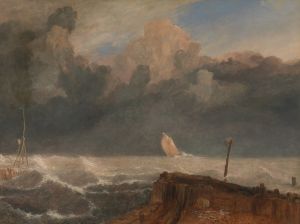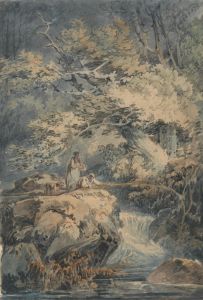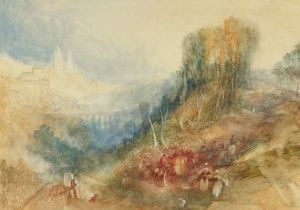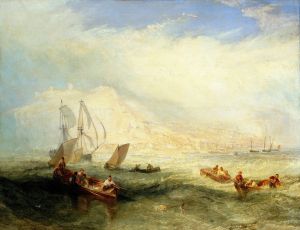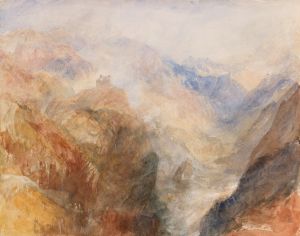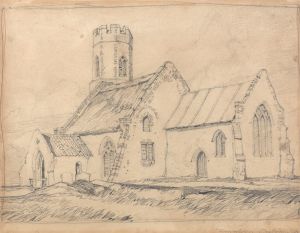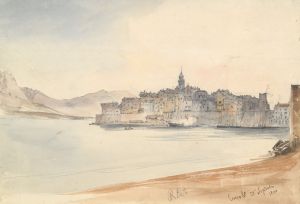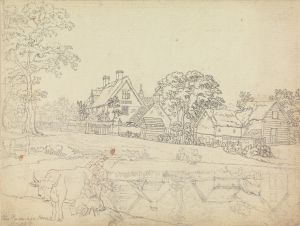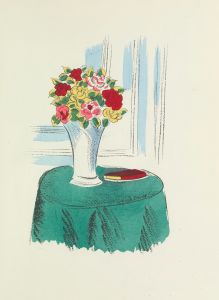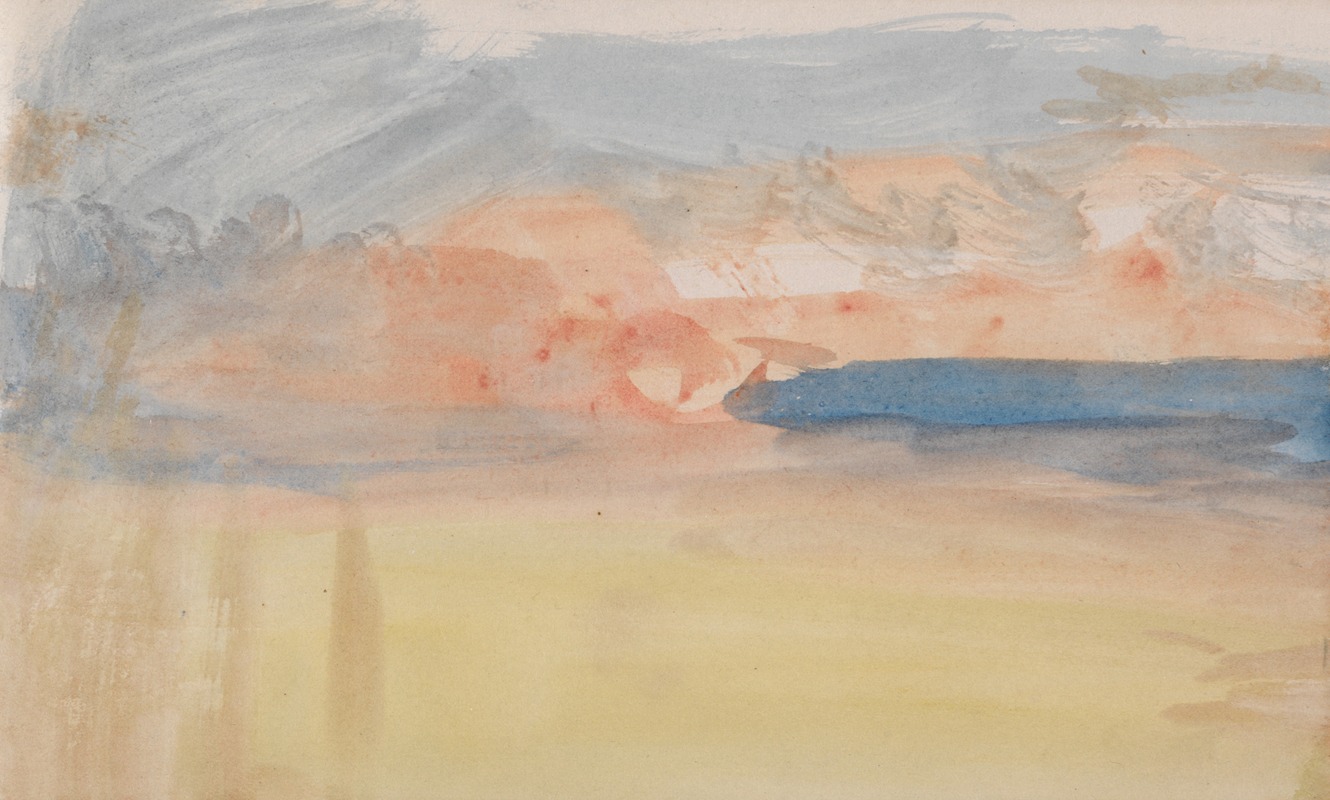
The Channel Sketchbook 26
A hand-painted replica of Joseph Mallord William Turner’s masterpiece The Channel Sketchbook 26, meticulously crafted by professional artists to capture the true essence of the original. Each piece is created with museum-quality canvas and rare mineral pigments, carefully painted by experienced artists with delicate brushstrokes and rich, layered colors to perfectly recreate the texture of the original artwork. Unlike machine-printed reproductions, this hand-painted version brings the painting to life, infused with the artist’s emotions and skill in every stroke. Whether for personal collection or home decoration, it instantly elevates the artistic atmosphere of any space.
Joseph Mallord William Turner, an eminent British artist known for his expressive and atmospheric landscapes, created a series of sketchbooks throughout his career that offer insight into his artistic process and the development of his ideas. One of these is "The Channel Sketchbook," which is part of a larger collection of sketchbooks held by the Tate Britain. Turner’s sketchbooks are invaluable resources for understanding his methods, interests, and the evolution of his work.
"The Channel Sketchbook" is believed to have been used by Turner during his travels along the English Channel. Turner was known for his extensive travels, which he undertook to gather inspiration and material for his paintings. The sketchbook contains numerous pencil sketches that capture the coastal landscapes, seascapes, and maritime scenes that Turner encountered. These sketches often served as preliminary studies for his larger oil paintings and watercolors.
Turner's sketchbooks were not merely repositories of visual information; they were also spaces for experimentation. In "The Channel Sketchbook," one can observe Turner's keen interest in the effects of light and atmosphere, which would later become defining features of his mature work. The sketches often depict the interplay of light and shadow, the movement of clouds, and the dynamic nature of the sea. These elements are rendered with a spontaneity and fluidity that suggest Turner's ability to capture the essence of a scene quickly and effectively.
The sketches in "The Channel Sketchbook" are typically executed in pencil, a medium that allowed Turner to work rapidly and with precision. The use of pencil also enabled him to focus on the structural and compositional aspects of a scene, which he could later develop into more detailed and finished works. The sketchbook includes a variety of subjects, from detailed studies of ships and coastal architecture to broader views of the coastline and the sea.
Turner's work in "The Channel Sketchbook" reflects his fascination with the natural world and his desire to capture its transient beauty. This interest is evident in the way he depicts the changing weather conditions and the effects of light on the landscape. The sketches convey a sense of immediacy and movement, qualities that Turner would continue to explore throughout his career.
The significance of "The Channel Sketchbook" lies not only in its contribution to our understanding of Turner's artistic process but also in its documentation of the landscapes and seascapes of the English Channel during the early 19th century. The sketchbook provides a glimpse into the visual culture of the period and the ways in which artists like Turner engaged with their environment.
Today, "The Channel Sketchbook" is preserved as part of the Turner Bequest at Tate Britain, where it is accessible to scholars and the public. The sketchbook remains an important resource for those interested in Turner's work and the broader context of British landscape painting. Through these sketches, viewers can appreciate Turner's skill as a draftsman and his ability to convey the sublime beauty of the natural world.





